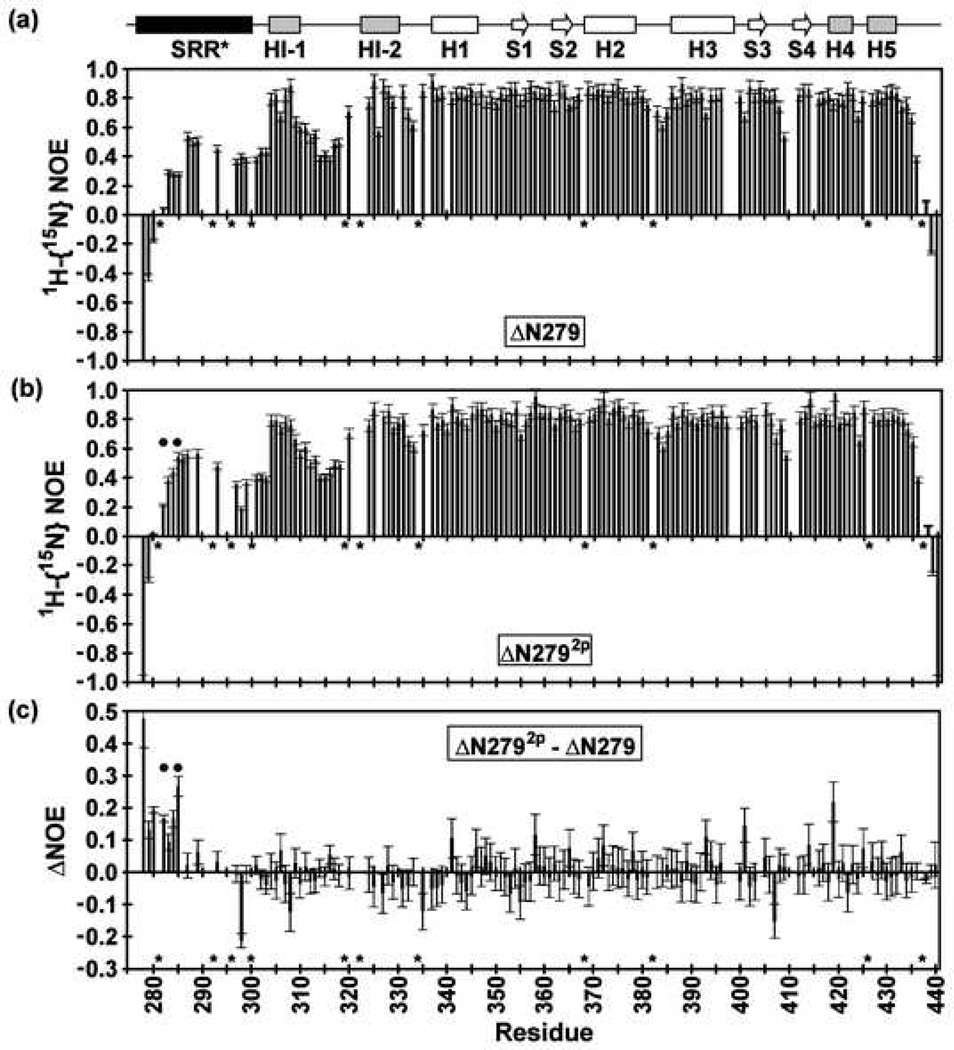Fig. 5.
The heteronuclear 1H{15N}-NOE values of (a) ΔN279, (b) ΔN2792p and (c) the difference, ΔNOE = NOE (ΔN2792p) – NOE (ΔN279), recorded in 500 mM NaCl and at 28 °C. The uniformly high NOE ratios of residues 301–440 in both ΔN279 and ΔN2792p are indicative of well-ordered backbone segments, except in regions such as the HI-1/HI-2 and H2/H3 loops, as discussed in detail for ΔN301 [Lee, 2005 #1]. Conversely, as shown by NOE ratios < 0.6, the SRR* in both ΔN279 and ΔN2792p exhibits flexibility on the sub-nsec timescale. This motion is not totally unrestricted as the NOE values are mostly > 0.2. Furthermore, positive ΔNOE values for residues 279–285 indicate that phosphorylation marginally dampens this fast timescale motion. Dark circles indicate the phosphoacceptor serines, and missing data correspond to prolines (*) or amides with weak or overlapping NMR signals.

